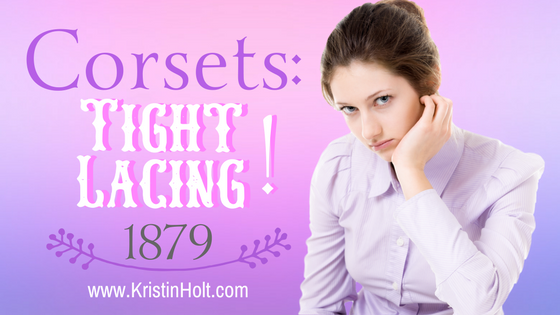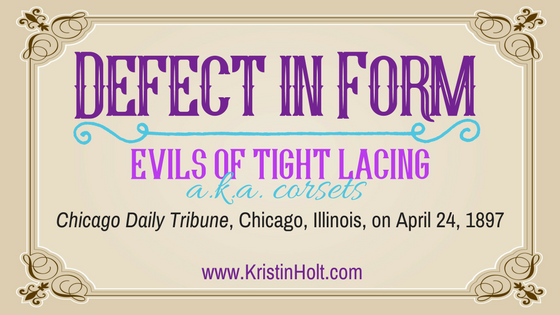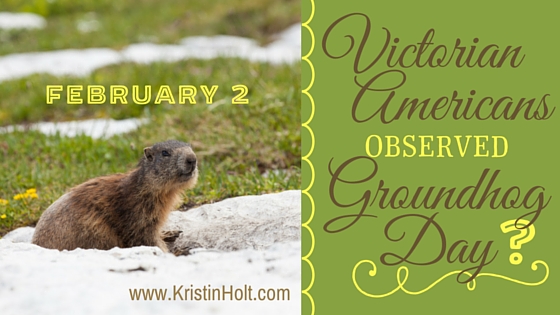
by Kristin Holt | May 18, 2017 | Articles
An unnamed Dress Reformer, utterly against “tight lacing” (corsets), uses the art of poetry to explain that everything that ills a woman–from her attitude to her nature, from length of life to a red-tipped nose–is all a result of the ill-fated habit of tightly cinched corsets. This vintage newspaper publication is an example of the American Victorian’s use of humor to blame fashion on craziness with a price too steep to pay.

by Kristin Holt | May 13, 2017 | Articles
Despite the voice of reason from scientists of the day, medical doctors, dress reformers, nineteenth century women continued to cling to advertisements claiming health depended upon corsets and laced tightly to achieve the beautiful figure they desired. Advertisements didn’t promote mere beauty–they went so far as to claim health. A newspaper article published in Chicago Daily Tribune of Chicago, Illinois, on April 24, 1897 spoke of Roentgen’s Light–X-rays–and the malformation caused by lacing. Today, the argument seems sound, prudent, and almost laughable that anyone fell for corsets.

by Kristin Holt | Apr 28, 2017 | Articles
An 1865 newspaper article persuades all young people to tell the truth in courtship, and attempts to convince all readers of the stark benefits, compared to disastrous tragedies, when his advice is ignored. A powerful view into Victorian history and attitudes about courtship and marriage.

by Kristin Holt | Mar 2, 2017 | Articles
In the 19th century American West, Gingham was more than checked fabric made of cotton–it was also striped. Any woven cotton cloth made of pre-dyed alternating threads (plaid, striped, or checked) was called gingham. Why would pioneers (or frontiersman, or Old West women) select gingham? What made this fabric practical? Why would we name an anthology with Gingham in the title?

by Kristin Holt | Feb 2, 2017 | Articles
When did Americans begin celebrating the Punxsutawney Phil, acknowledging the groundhog’s emergence from its den…and whether or not it saw its shadow? Is this a new observation, or an old? We know Victorians celebrated a wide variety of holidays we still acknowledge, and some we don’t. Did the Victorians’ superstitions embrace the Groundhog and his Shadow? Come see!













